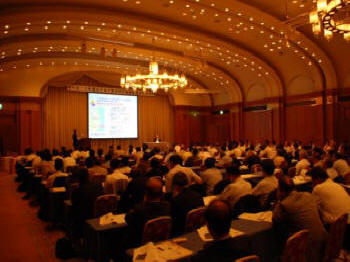| Natural spawning of chum salmon had been conserved since
17th century in Japan. In 1888, the first public salmon hatchery was
constructed along the Chitose River in Hokkaido. Since then many hatcheries
were distributed in northern Japan, while the population size of salmon
had abruptly decreased due to inexperienced hatchery techniques and overfishing.
In 1952, the National Hokkaido Salmon Hatchery (HSH) was established under
the Fish Resource Conservation Law. The HSH started scientific research
and enhancement activities to restore salmon population, and finally the
population size of chum salmon has increased since the 1970s. In the
autumn of 1997, HSH was reorganized to the National Salmon Resources
Center (NASREC). The NASREC was reformed as an Independent Administrative
Institution in April 2006, and incorporated with the Fisheries Research
Agency in April 2006. The main role of NASREC is freshwater and marine
research activities for the proper stock management of salmon in Japan,
including the conservation of genetic stocks and their habitat ecology.


|
|
